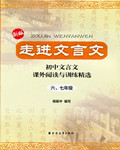题目内容
Tickets for the 2014 World Cup in Brazil have gone on sale, with fans able to apply on FIFA’s website. FIFA is expecting a similar demand to that in Germany 2006, when there were about seven applicants for every ticket of the 64 matches. And now around 3.3 million tickets will be available for the matches in 2014.
Tickets will range in price from£58 for first-round matches to£632 for the final at Maracana Stadium in Rio de Janeiro. Brazilian citizens over 60, local students and members of some social programs can purchase tickets for £15.
The Price of Football - World Cup 2014
Items | Prices | Items | Prices |
Ticket | £58-£112 | Final ticket | £281-£632 |
Sun cream | £9.50 | T-shirt | £13 |
McDonald’s meal | £11 | Water | £1.28 |
Imported beer | £3.83 | Domestic beer | £1.91 |
Coffee | £2.55 | Average dinner | £29 |
“It’s always difficult to predict,” said FIFA marketing director Thierry Weil. “But I truly believe that it will be more similar to what happened in Germany than in South Africa in 2010.” According to FIFA, the 2006 World Cup was attended by more than 3.3 million fans. Almost two million tickets were sold to the general public in South Africa, although the number of applications during the first ticketing phase was significantly lower.
All applications made before 10th October 2013 will enter a random selection draw if there are not enough tickets available to fulfill all requests. The sales of the leftover tickets will begin on 5th November on a first-come, first-served basis. Another phase will begin on 8th December after the draw is made. The tournament begins on 12th June, with Brazil playing the opener in Sao Paulo.
A study on the price of World Cup 2014 looked at the ticket prices and the cost of travelling to Brazil and found that our English fans face hotel costs of between£46 and£797 a night, while packages range from£2,999 to£14,999.
1.How much should a Brazilian student pay for the opening match?
A.£15 B.£58 C.£112 D.£632
2.From the passage we know that Thierry Weil_______.
A.feels proud of what they achieved in South Africa 2010
B.feels worried about the sales of the tickets for Brazil 2014
C.holds the belief that Brazil 2014 will be the greatest world cup
D.believes that more fans will attend Brazil 2014 than South Africa 2010
3.What will FIFA do if there are not enough tickets available for requests before Oct.10, 2013?
A.They will sell the spare tickets to the applicants.
B.They will sell on a first-come, first-served basis.
C.They will choose the applicants based on a random selection draw.
D.They will sell them the tickets to be sold on Dec.8.
 字词句篇与同步作文达标系列答案
字词句篇与同步作文达标系列答案 走进文言文系列答案
走进文言文系列答案假设你是红星中学高三(1)班的学生李华,校报英文版正在开展“续写雷锋日记”活动。请根据以下四幅图的先后顺序,将你所做的一件好事以日记形式记述下来,向校报投稿。
注意:1.日记的开头已为你写好。[来%^~源&:中#教网]
2.词数不少于60。
|
Saturday, May 3 Fine
This morning, ________________________________________________________
_________________________________________________________________________
_________________________________________________________________________
_________________________________________________________________________
_________________________________________________________________________
_________________________________________________________________________


